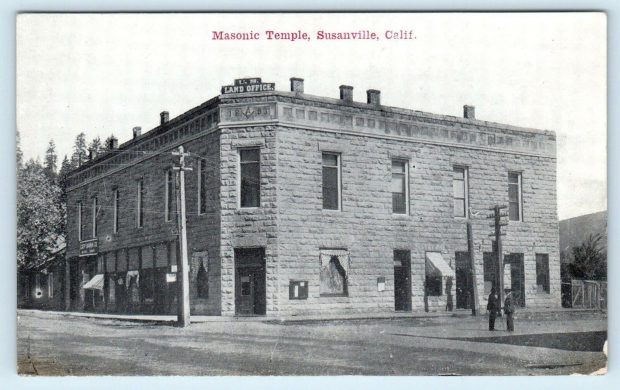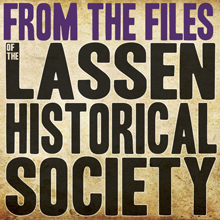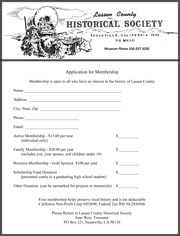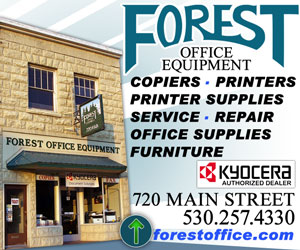

by Susan Couso
In the middle of the nineteenth century, Germany was in turmoil. Political reforms failed and the old German Confederation regained power with all its weakness and inadequacy. As a result, political and social unrest surged throughout the country.
The Jewish population of the area had been subjected to bias and persecution for many years under the old regime, and as reform failed, conditions worsened.
But as German citizens suffered, a new hope arose in the form of a promise of new-found gold and riches in the United States. A large immigration began, and almost 90% of those leaving Germany chose the U.S. as their ‘promised land’.
So many Germans emigrated to the U.S. that in 1851, a petition was brought before Congress to declare the U. S. ‘bilingual’. Among those who chose a new, more prosperous life was David Knoch (kuh nock´). Knoch had been born in Germany in 1824, and in 1850 he made the decision to make his future in California.
As Knoch worked the mines of California, it became apparent to him that mining was difficult work, and very few men were making a good amount of money. He also noticed that these miners needed the necessities of life. Knoch decided to earn his living catering to the needs of those hard-working individuals. He began peddling from mining camp to mining camp, carrying his merchandise on his back.
It still wasn’t an easy life. In 1863 and 1864, he was required to pay $10 tax as a peddler in Downieville. That was a large chunk of his income, and as he traveled from town to town, he was subjected to taxes from various other entities. But in 1864, Knoch heard that the Union Pacific railroad was planning on putting a line through to Susanville. Knoch anticipated a booming new town with many possibilities and decided to try his luck there.
He carried his stock of goods on his back and was pleased to sell out completely. With this promising turn of events, David Knoch decided to move to Susanville and settle down with his wife, Fanny.

Knoch had made a good friend while working the mines of Butte County, George Clement Perkins. Perkins, ten years younger than Knoch, had come to California in 1855, and he and Knoch were of like mind. Perkins soon quit the unsuccessful mines and began working as a store clerk.
In a short time, he bought the store and was grossing $500,000 per year. Both he and Knoch understood the power of merchandising. Knoch would travel to Oroville to replenish his wares. He rented a small place on the north side of Susanville’s Main Street, a little west of half-way between Lassen and Gay Streets, but it wasn’t long before he outgrew this first location. He then purchased the lot across the street and set up his first real store.
Knoch took trip after weary trip to Oroville to get merchandise for his store. He named it the ‘Perkins Store’ after his good friend and benefactor, George Perkins. The store was not much more than a shack, and it served as a dwelling for his family also.
In this little shack, the Knochs had four children. A previous child, born in Oroville, had died there. Isaac Knoch, later recalled how four children had been born in Susanville and two died in the same day from Scarlet Fever. Two children survived to adulthood, Isaac and Rachel.
The store was booming, with customers from as far away as Alturas, and the business soon outgrew the Perkins Store. In 1869, George Perkins was elected to the State Senate, and Knoch’s introduction to Senator Perkins’ group of associates was a great help.
Perkins personally took Knoch to San Francisco and vouched for his credit. Perkins moved up in his political career when he was elected as the 14th Governor of California in 1880, and United States Senator in 1893.
Knoch was a frugal businessman. He would walk to and from Oroville to save money, but he would catch the stage within a few miles of town, for appearances sake. Along with the booming business, there were also huge losses. He lost $20,000 in loans, investing in Hayden Hill. Fortunately, due to Perkins’ help, his credit was good, and he started again.
In 1874, he built a small stone one-story building to replace the ‘shack’, just 30′ X 100′ in size. The family lived in an apartment above the store, with the living room and bedrooms facing Main Street and the kitchen and a spare room in back. The roof was covered with twelve inches of dirt to help prevent the spread of fires.
Isaac Knoch told of how he and his sister used the dirt roof as their ‘playground’. They were not allowed to play as freely as most children in town. Their mother was always concerned about keeping them clean and healthy, probably because of the memories of the deaths of her other three children. They lived in these conditions until buying a house on North Roop Street in about 1878. It was between Nevada and North Streets, and was, according to Isaac Knoch, “300 feet square.”
The stone store was destroyed in the fire of July 1893. Even though the stone construction was supposed to be ‘fireproof’, the intense heat blew off the front and back doors.
David Knoch had loaned the money for the purchase of the Steward Hotel, and in 1888, the loan was in default. Knoch took over operations of the business until 1892, when it was rented by Mrs. M. McMillan. But the fire of July 19,1893, which originated in the hotel, destroyed the Steward House also.
By the 1890’s, Knoch owned most of the lots in the eastern section of Main Street, on the north side, between Lassen and Gay Streets. In 1893, he purchased the old Masonic Building, which had been given to the Masons by Isaac Roop, and moved it from the ‘Mason’s Lot’ at the northwest corner of Main & Lassen Streets, down the street to his property.
Then, the Masons built their first stone structure on the ‘Mason’s Lot’. It was made of local stone, from the quarry at the end of Quarry St. The original plans called for around $6,000 in expenses, something that the Mason’s could afford. But changes made as the building was erected brought the costs to over $16,000, with the building still unfinished.
The bank began to close in as interest charges were unpaid, when David Knoch, himself a Mason, came to the rescue and paid off the bank, with over $9,000 in back interest. The Masons were never able to pay Knoch back, so a deal was made with Knoch. He would take ownership of the building and let the Masons use it, ‘rent free’, as their meeting place.
On August 9, 1898, disaster struck again as fire ravaged Susanville. The Masonic Hall was gutted, and all that remained were the walls. Once again, David Knoch faced rebuilding. By this time, he was pretty much retired, and his son Isaac was in charge of the business.

Isaac Knoch took on the challenge of rebuilding the now-renamed ‘Knoch Building’. He prided himself on building, “10 years ahead of the times”, with the latest improvements.
Knoch raised the roof to make the building a three-story structure. To raise the roof, he bought “a flock” huge of jack screws at a price of $2.50 each. In true Knoch fashion, he sold the used jack screws for $3.50 each when the job was completed.
With the new changes, the building was one of the finest in town, and the Masons continued to meet there until 1917. The Knoch Building also housed numerous businesses, including the U.S. Land Office, and the Lassen Industrial Bank.
In 1908, David and Fanny Knoch built the house on the Northwest corner of Roop and Nevada Streets as their final home. David Knoch died in Susanville in 1911 and is buried in the Jewish Home of Peace Cemetery in Colma, California.

If you are a fan of our weekly history stories you should join the Lassen County Historical Society! It’s a fun way to be a part of our county’s rich history. When you sign up, you’ll receive regular Historical Society newsletters with interesting stories and information. Membership is open to anyone with an interest in area history.
Through your membership you help preserve local history. You can download a membership application by clicking here.





